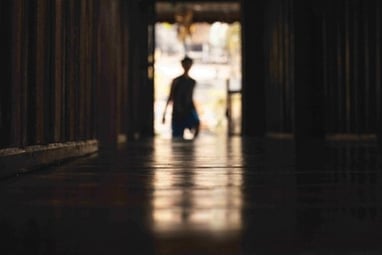 Have you ever come into your facility first thing in the morning to find your concrete floor damp or sweaty? Have you found puddles in low-lying areas, or noticed that your new floor coating is starting to blister or get discolored?
Have you ever come into your facility first thing in the morning to find your concrete floor damp or sweaty? Have you found puddles in low-lying areas, or noticed that your new floor coating is starting to blister or get discolored?
Besides being an unsightly nuisance, a wet concrete floor can cause a host of other problems. It can compromise worker safety by creating slippery surfaces, can damage sensitive equipment, and can cause mold problems, especially if there’s wood or carpeting on top. If the floor is coated with epoxy or another coating, moisture can cause it to bubble, stain, peel, or crack.
If you’ve ruled out the possibility of a leak from the roof or from your equipment, you may be dealing with an issue with the concrete floor itself. So what are common causes for wet concrete floors?
Possible Cause #1: Condensation
If the ground is cold but the air is warm and humid, water vapor from the air will condense on the cool concrete surface. This “sweating slab” may happen just during seasonal temperature changes, but it can also be caused by year-round environmental factors. Either way, you’ll want to make sure you eliminate potential problems.
Depending on your facility, you may try these methods to counteract condensation:
- Minimize contact. Elevate any vulnerable equipment or use moisture-proof padding to keep it away from direct contact with the floor.
- Regulate temperatures. Consider better climate control for your facility to minimize the temperature difference between the air and the floor. Of course, full air conditioning or heating may not be a realistic solution for warehouses or other large facilities.
- Dehumidify. If an HVAC system isn’t practical, you may want to explore using commercial-grade dehumidifiers to reduce the amount of moisture in the air.
- Improve airflow. To make sure humid air isn’t stagnating within your facility, install industrial-grade ceiling fans to keep air moving, or at least run large fans at night during troublesome seasons.
Possible Cause #2: Rising Water Vapor
It’s also possible that the moisture isn’t coming from the air at all, but rising up from the ground. Water vapor tends to move from moist areas to drier areas, and since concrete is porous, vapor is able to pass through your floor.
If you live in an area with relatively damp soil, the builder should have installed a moisture vapor barrier before pouring the concrete. Unfortunately, this doesn’t always happen.
Other potential sources of moisture could be an undetected pipe leak or unusually high ground water. If the concrete is new, it could be that the water used for the curing process or in the concrete itself has not yet fully dried (it can take up to a year for concrete to fully cure).
Generally, water vapor issues are more complicated to solve than simple condensation issues. You may be able to get a specialized floor coating that controls moisture to counteract the issue, but it’s not a one-size-fits-all solution.
When to call an expert
To determine the cause of your facility's wet concrete, you’ll want to get a professional moisture test done. There are a few do-it-yourself tests out there, but these typically don’t provide enough useful information to make an informed decision on a solution.
Once details about the cause and extent of the moisture are established, you’ll want to consult a flooring expert on what the best solutions are, especially if water vapor is the culprit. You don’t want to just go out and spend money on the first moisture control coating you find, since the wrong coating for your floor’s particular requirements could easily blister and peel up within just a few months.
If you’re in the Southeast, the experts at CPC Floor Coatings would be happy to discuss your facility’s problem and recommend solutions. Call us at (864) 855-0600 or click the banner below to learn more and schedule a consultation.

